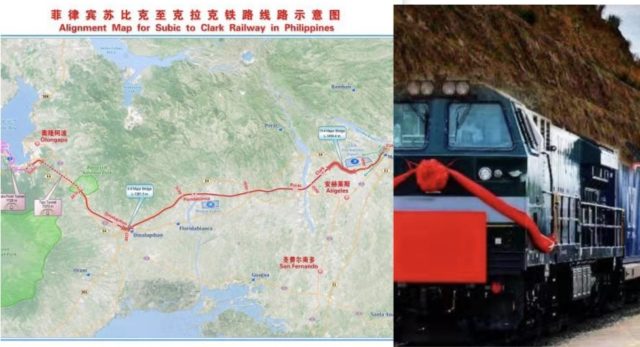CLARK FREEPORT — The multi-sectoral advocacy group Pinoy Gumising Ka Movement (PGKM) is once again in the forefront in exposing what it called “the redundancy” of the P50 billion Subic-Clark Railway Project (SCRP) branding it “anti-development and anti-progress.”
Over-the-weekend, PGKM chair Ruperto Cruz said the railway project is redundant considering that an expressway — the Subic-Clark-Tarlac Expressway (SCTEX) – is already long done and actively being used to transport goods and people to Clark and other parts of Luzon from Subic and vice versa.
The envisioned P50-billion, 71-kilometer freight railway will connect Subic and Clark as a logistics corridor, according to documents of the Bases Conversion and Development Authority. But the PGKM said it is redundant considering that the SCTEX already provides “a seamless and reliable connection not only for cargo but also for people.”
He said hundreds of truckers that ferry goods from Subic will be affected because of the cargo railway project, which makes it “anti- development and anti-progress.”
“At this time of the pandemic, the SCRP should not be a priority because people will lose their jobs,” Cruz said.
“We fear the SCRP will only become a white elephant and will be used to smuggle vehicles,” he added.
Cruz pointed out that just before the pandemic, the Clark Development Corp. approved several locators for mixed brand vehicles in this freeport which, he said, “laid an ideal ground for the freight railway for smuggling.”
Locators inside the freeport enjoying tax-exempt privileges, he said, would make the SCRP conducive to smuggling.
“A railway not only for cargo but even for passenger is best not between Subic and Clark but Clark to the North, as far as Laoag, to spur development in trade, commerce, and tourism,” Cruz said. “The Clark terminus of the Manila-Malolos-Clark railway will then be transformed as the nexus to the North line.”
Encroachment
The PGKM also noted that the alignment of the SCRP encroaches on ongoing development in Porac and nearby areas.
“As it is, it will even pass through the (Royal Garden) golf course all the way to Clark,” he said, adding that even posh housing developments and commercial areas would be adversely affected.
The Ayala Land development project in Porac is also in danger of being encroached by the alignment of the SCRP, he said.
In recent developments, published reports said “about 42 hectares of mangrove forest within the watershed reserve of Subic Bay Freeport is at risk and may have to make way for the Subic-Clark Railway Project unless the Chinese company handling the construction alters its proposed track alignment.”
As an offshoot, the Department of Transportation ordered the Chinese contractor “to find an alternative solution…so that we can address the concerns involving the mangroves.”
It was also reported that the risk posed on the mangroves within the 30-ha Binictican-Malawaan patch and the 12-ha Boton site is where the SCRP’s logistics terminal is planned to be built.
The railway alignment will also go through the Roosevelt protected landscapes, three ancestral domains and 37 villages in Bataan and Pampanga and the cities of Olongapo and Angeles onto to Clark Freeport.
Tugade
Cruz lambasted Transportation Secretary Arthur P. Tugade for “creating problems instead of finding alternatives to solve them.”
He said the DOTr is riddled with problems by itself like the mess involving the Land Transportation Office drivers licenses and vehicle plate numbers, RFIDs, mandatory motor vehicle inspection centers, the recurring traffic along EDSA, etc.
Cruz said when Tugade was the president and CEO of the Clark Development Corp., he pushed through with the Capillon project despite the mounting opposition to it.
The construction of the Capillon project beside the main gate of this freeport that started when Tugade was CDC president has remained unfinished.





